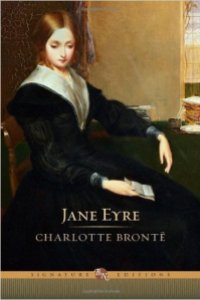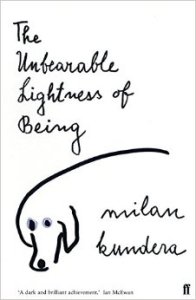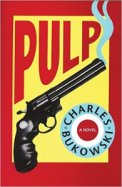Violence, Classics and Nature @ BYOB Party in July 2016 (Part 5)
 Anshuman got the renowned book Blood Meridian by Cormac McCarthy. Unlike McCarthy’s previous books, this one explores violence with gusto. The story revolves around Kid who is part of a mercenary gang who scalps Indians and sells those scalps. The landscape where the gory masterpiece unfolds is the Texas-Mexico borderlands. McCarthy retains the wildness in the Wild West and removes the romanticism of the idea of the Wild West, probably created to reconcile with the goriness of the past..In fact Anshuman felt that it was a parody of the Wild West. McCarthy goes deep into the theme of violence and he pictures redemption through violence like no author can.
Anshuman got the renowned book Blood Meridian by Cormac McCarthy. Unlike McCarthy’s previous books, this one explores violence with gusto. The story revolves around Kid who is part of a mercenary gang who scalps Indians and sells those scalps. The landscape where the gory masterpiece unfolds is the Texas-Mexico borderlands. McCarthy retains the wildness in the Wild West and removes the romanticism of the idea of the Wild West, probably created to reconcile with the goriness of the past..In fact Anshuman felt that it was a parody of the Wild West. McCarthy goes deep into the theme of violence and he pictures redemption through violence like no author can.

Jeeth brought along a classic historical fiction The Count of Monte Cristo by Alexander Dumas, set in France, in the nineteenth century. The story deals with the classic theme of revenge going wrong. Edmund Dantes has been severely wronged and he longs for retribution. But at what cost? The book has spewed many adaptations on screen and off it.
 Meera Iyer got the book Nature in the City by Harini Nagendra. Since we live in Bengaluru, this book is of great relevance to us. We’ve all heard about how beautiful the Garden City once was, but now it’s at the mercy of development and human ambition. Harini Nagendra talks about nature in Bengaluru, something that was once taken for granted but which is now being remembered in its absence. The author effortlessly straddles between history, ecology and sociology of Bengaluru from the seventh century to the present day. She writes about the changing landscape, including its sacred groves, lakes and home gardens. She takes a hitherto unknown look at nature in slums.
Meera Iyer got the book Nature in the City by Harini Nagendra. Since we live in Bengaluru, this book is of great relevance to us. We’ve all heard about how beautiful the Garden City once was, but now it’s at the mercy of development and human ambition. Harini Nagendra talks about nature in Bengaluru, something that was once taken for granted but which is now being remembered in its absence. The author effortlessly straddles between history, ecology and sociology of Bengaluru from the seventh century to the present day. She writes about the changing landscape, including its sacred groves, lakes and home gardens. She takes a hitherto unknown look at nature in slums.
Although the author is optimistic about the role of civil society in saving the city, Meera is not completely convinced as the situation requires a radical change of mindset.
More books in Part 5.

 Sunny started the session with the first book he had ever read.
Sunny started the session with the first book he had ever read.  Another classic we encountered was Milan Kundera’s
Another classic we encountered was Milan Kundera’s  Still on the subject of great writers and their books, Karan had a book by a celebrated author.
Still on the subject of great writers and their books, Karan had a book by a celebrated author. Since we can’t have a BYOB Party without the Mahabharata, let’s have a look at what Anshuman Mishra, founder of Mercadeo Education Tech, was reading. This book has been featured here before Devadutt Pattanaik’s
Since we can’t have a BYOB Party without the Mahabharata, let’s have a look at what Anshuman Mishra, founder of Mercadeo Education Tech, was reading. This book has been featured here before Devadutt Pattanaik’s  That was without a doubt a heavy interpretation. Neha who works in The IT industry prefers to read books that are refreshing and in more of the ‘light reading’ category. She hopes that this BYOB Party inspires her to read more, a habit that is hard to sustain in such busy times. She talked about her experience reading a book called
That was without a doubt a heavy interpretation. Neha who works in The IT industry prefers to read books that are refreshing and in more of the ‘light reading’ category. She hopes that this BYOB Party inspires her to read more, a habit that is hard to sustain in such busy times. She talked about her experience reading a book called 
 Piya Bose, HR Professional, has been reading every Indian author she can find and she feels that there are not too many good ones. There seem to be quite a few in the market, but not many have caught her fancy. Either the stories do not suit her taste or she finds the editorial errors too glaring to ignore. One writer she particularly has taken a fancy to is Anjum Hasan. Her book
Piya Bose, HR Professional, has been reading every Indian author she can find and she feels that there are not too many good ones. There seem to be quite a few in the market, but not many have caught her fancy. Either the stories do not suit her taste or she finds the editorial errors too glaring to ignore. One writer she particularly has taken a fancy to is Anjum Hasan. Her book  Soumya Ravindranath, independent consultant, came across a light read
Soumya Ravindranath, independent consultant, came across a light read 